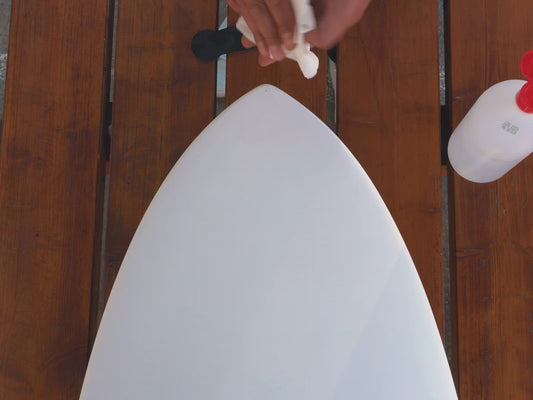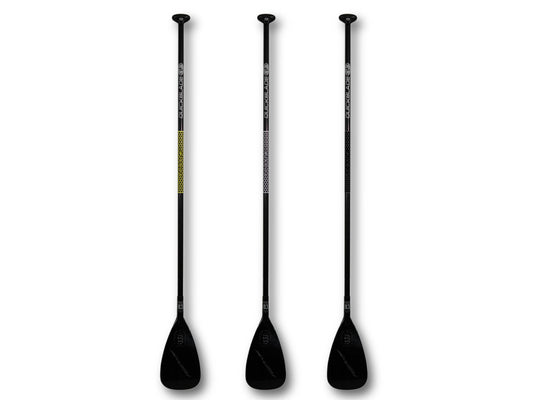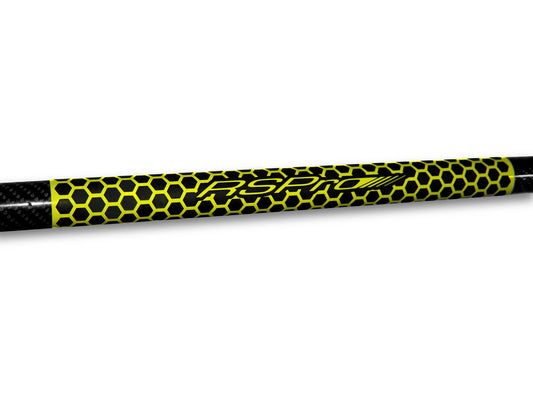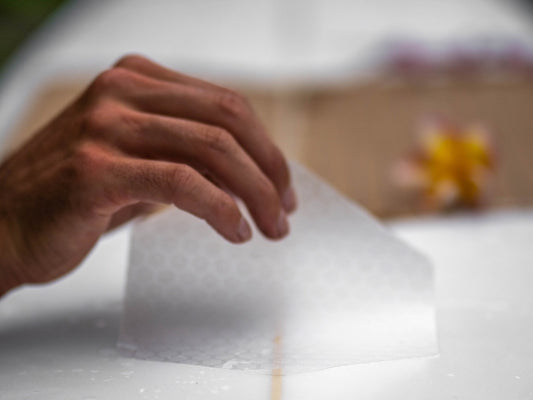Wavemakers ep2: Flama Surfboards | RSPro
Carles CarreraShare
English transcript first. Transcripción en español a continuación.
Who is Flama Surf?
Flama Surf is a project that I started in 2010 with the main objective of finding alternatives to build more sustainable surfboards with less impact than what we've been doing for the last 60 or 70 years.
How did you get into the world of surfing?
I started surfing from a very young age. I don't know why, in the Mediterranean, and I didn't have the influence of anyone. It was as if it was in me.
What is your inspiration behind the design and shape of the surfboards you create?
Basically, one objective, which is to do things as sustainably as possible, minimizing or avoiding the use of toxic chemical materials derived from oil or impossible to recycle, like traditional foam and fiber boards.
What has been the biggest challenge you've faced when creating a custom surfboard for someone?
Challenge... well, a special challenge was to make Tow boards for Axi Muniain. To ride those monsters he catches on the “Costa da Morte”. Honestly, that kept me awake until I knew Axi was very happy with the boards. Even recently, I saw some photos of some monsters he was surfing with those boards last year, and I feel very proud.
How has the technology and materials in surfboard manufacturing evolved in recent years?
The truth is that the evolution of the industry, the large board industry, has been minimal. Minimal, epoxy has been slightly more introduced, which is a resin that is less toxic than polyester resin, but the steps the industry has taken towards truly sustainable boards can be counted on one hand. And the truth is that it's not for lack of alternatives. There are alternatives. It's a question of the industry's will.
Do you see the surf industry as overly conservative or resistant to change?
We are far behind in terms of the industry, especially the large board industry. We have been manufacturing boards for nearly 70 years, exactly the same model, with the same concept, a foam core covered with fiber and resin. And it seems incredible that with today's advances, the use of sustainable and recyclable materials or those from recycled sources is not more widespread. I say again, alternatives exist. And if I've managed to make boards that are practically 100% organic or with an 80% lower carbon footprint than traditional boards, in my small workshop, there's no reason why the big industry isn't doing it.
What are the current trends in board design in the world of surfing?
Yes, trends keep coming out. The latest seems to be Mid-Lengths, I don't know if it's because there are more and more people in the water and with a larger board, people realize they catch more waves. In the end, they have more fun, and at least one good thing is that we're slowly moving away from the influence of professional surfing and those tiny boards made for superheroes, athletes who surpass us in everything. More and more people are opening up to boards that basically provide happiness and fun, which is what it's all about.
Does the creation of a board for a professional differ from an amateur surfer?
Well, it differs in that the professional surfer is an athlete, a true athlete capable of with a level of technique and practice that is out of the reach of any ordinary person. So when designing a board, you have to keep in mind who it's for, what their level is and as I say, prioritize fun, catching many waves and facilitating surfing.
Which professional surfers have you worked with in creating boards? Have you worked with any?
I haven't worked much with professional surfers. They have been able to test my boards, but since they are sponsored by brands that do the opposite of what I do. So let's say that the message that one can convey fits a lot with their sponsor, which makes it difficult. So I've worked more with other high-level surfers, but not top level. There is a video out there of Kepa Acero surfing one of my boards from quite a few years ago, with Axi Muniain and right now I'm making boards for people in Euskadi like Zukurt and Mundaka, also making boards for Meñakoz. The truth is it's hard to find professionals who are willing to do this because of a contract issue.
Do you believe your surfboards can compete with boards from general brands at a professional or competition level? Or is your audience different?
Absolutely. Right now, and for the past 15 years, I've developed about five different technologies, and I believe it's more than proven that the boards I can make currently can compete with any of the current technologies, even super light epoxy boards with a lot of flex. With my technologies, I can play with the flex, make super strong boards for the big waves. Really, I can do anything depending on what the surfer needs. The answer is a resounding yes.
What advice would you give someone looking to buy their first surfboard?
Above all, be honest with yourself about your skill level and take advice from a local shaper who knows the local conditions. Don't be fixated on designs or fads from outside shapers, and let yourself be guided by those who know. Ideally, if they know you personally and have seen you surf, that's the best because they will be able to make a board suitable for your level. If you dream of being Kelly Slater and surfing like him, and you buy a board like his to surf like him, you won't succeed. You'll get frustrated, you won't catch waves, and you'll give up surfing.
What is your favorite surfboard you've created so far? And why?
Hmm. I've had many favorite boards. Whenever I can to experiment with new ideas, I make boards for myself, which tend to be smaller, wider boards with a lot of volume. My favorite board? Probably the last one I've been surfing because it's the most recent one I made. When you set out to make a board that works under certain conditions and in a specific way you have in your mind, and you get in the water and see that the board performs exactly how you had envisioned, the satisfaction is immense. But as I enjoy continuing to investigate, in a few months, I'll probably have another that I love and will be the one I surf the most.
How do you see the surfing industry right now? Do you think we're in a good period? Do you see good years coming? Or is it in a bad state?
On a global level, I think we're in a moment of change. The thing is, we don't know where that change is headed. We've come through these tough years of Covid, where it seemed the world was changing. We've come out of Covid, and it seems the world is still interested in operating the same way. But I think we're on the brink of a massive shift, but we don't know where it's headed. What I do see is that in terms of surfing, there's a lot of small alternatives and small brands doing beautiful things. And we have a large industry that continues to operate with the same concepts and values that it's had for the past 50 years. I place a lot more trust in these small changes than in what the large industry can do, which honestly, doesn't concern me much.
If you could give a message to all the surfers in the world to finish up, what would it be?
A message to the surfers ... In the end, being a surfer means being a person, being aware of the world we live in and where we're headed, which I don't think is very good. And if we want big changes, we're going to have to start changing ourselves. So it's better to look at oneself and not complain so much that perhaps the politicians aren't doing enough because I think the first ones who need to change are us. And that starts with buying food, when we travel, when we buy our next board, that's what you have to take into account. But surfing is just one more part of life, so it's not that important.
En Español:
Quién es Flama Surf?
Flama Surf es un proyecto que inicié en 2010 con el objetivo básicamente de buscar alternativas para construir tablas más sostenibles y con un menor impacto de lo que venimos haciendo en los últimos 60 o 70 años.
¿Cómo te introdujiste en el mundo del surf?
Yo empecé a surfear de muy pequeño, no sé por qué en el Mediterráneo y tampoco tuve influencia de nadie. Era como que lo llevaba dentro.
¿Cuál es tu inspiración detrás del diseño y la forma de las tablas de surf que creas?
Básicamente un objetivo, que es hacer cosas lo más sostenible posible, minimizando el uso o evitando el uso de materiales químicos tóxicos derivados del petróleo o imposibles de reciclar como las tablas tradicionales de espuma y fibra.
¿Cuál ha sido el mayor desafío al que te has enfrentado al crear una tabla de surf personalizada para alguien?
Desafío… Bueno reto especial fue hacer unas tablas de Tow para Axi Muniain. Para pillar esos mamotretos que se pilla el en Costa Da Norte. La verdad que eso me quitó el sueño hasta que supe que Axi estaba muy contento con las tablas. Incluso recientemente he podido ver el año pasado algunas fotos de algunos monstruos que estuvo surfeando con esas tablas y eso sí que me siento orgulloso.
¿Cómo ha evolucionado la tecnología y los materiales, en la fabricación de las tablas de surf en los últimos años?
La verdad es que la evolución de la industria, de la gran industria de tablas ha sido mínima. Mínima, apenas se ha introducido, se ha generalizado un poco más el uso del epoxi, que sí,que es una resina o es menos tóxica que la resina de poliéster, pero los pasos de la industria hacia unas tablas verdaderamente sostenibles se cuentan con los dedos de una mano. Y la verdad es que no es por falta de alternativas. Alternativas las hay. Es una cuestión de voluntad de la industria.
¿Ves en la industria del surf una industria demasiado conservadora o que te cuesta mucho hacer cambios?
Llevamos un gran retraso en cuanto a la industria, sobre todo a la gran industria de tablas. Llevamos prácticamente 70 años fabricando las tablas, exactamente el mismo modelo, con el mismo concepto, un núcleo de espuma forrado de fibra y resina. Y parece mentira que con los avances que ha habido hoy día no esté mucho más generalizado el uso de materiales sostenibles y reciclables o procedentes de reciclados. Ya digo que las alternativas las hay. Y si yo he conseguido hacer tablas pues prácticamente orgánicas al 100% o con un impacto en la huella de carbono, un 80% menor que en las tablas tradicionales. Yo en mi pequeño taller, la gran industria, no hay ningún motivo para que no lo esté haciendo.
¿Cuáles son las tendencias actuales en el diseño de tablas en el mundo del surf?
Sí, cada poco van saliendo modas. La última parece ser los Mid-Lengths no sé si por el hecho de que cada vez hay más gente en el agua y pues con una tabla más grande, la gente se da cuenta de que pilla más olas. Al final se lo pasa mejor y al menos en una cosa buena es que nos estamos alejando poco a poco de la influencia del surf profesional y esas tablitas pequeñitas hechas para superhéroes, atletas que que nos superan en todo y cada vez más. La gente se está abriendo a llevar tablas que básicamente proveen felicidad y diversión, que es al fin y al cabo, de lo que se trata.
¿Difiere la creación de una tabla para un profesional en comparación con un surfista aficionado?
Bueno, difiere en cuanto que el surfista profesional es un atleta, un auténtico atleta capaz de con un nivel de técnica y de práctica que está fuera del alcance de cualquier persona normal. Así que cuando se diseña una tabla, lo que hay que tener en cuenta es para quién se está haciendo, cuál es su nivel y como digo, priorizar la diversión, coger muchas olas y facilitar el surfing.
¿ Con qué surfistas profesionales has trabajado a la hora de creación de tablas? ¿Has trabajado con alguno?
Con surfistas profesionales no he trabajado mucho. Sí que han podido testear mis tablas, pero ya que están esponsorizados por marcas que hacen lo contrario de lo que hago yo. Pues digamos que el mensaje que puede transmitir uno encaja mucho con su sponsor, con lo cual es difícil. Así que he trabajado más con otros surfistas de de nivel, pero no al nivel top. Sí que por ahí corre un vídeo Kepa Acero surfeando una de mis tablas hace ya bastantes años,con Axi Muniain y ahora mismo estoy haciendo tablas para gente en Euskadi como Zukurt y Mundaka haciendole tablas tambíen para Meñakoz. La verdad es que cuesta encontrar profesionales que se presten a esto por una cuestión de contrato.
¿Crees que tus tablas pueden competir con tablas de marcas generales a nivel de profesionales o de competición? ¿O tu público es otro?
Totalmente. No, no ahora mismo y en los últimos 15 años he hecho unas cinco tecnologías distintas y creo que está más que probado que las tablas que puedo hacer actualmente pueden competir con cualquiera de las tecnologías actuales, incluso tablas super ligeras de epoxy y con mucho flex. Y ahora mismo con las tecnologías mías puedo puedo jugar con el flex, hacer gangs súper resistentes para las grandes. En realidad cualquier cosa según lo que necesite el surfista. Rotundamente sí.
¿Qué consejo le darías a alguien que está buscando comprar su primera tabla de surf?
Sobre todo. Sobre todo, que sea sincero consigo mismo, con su nivel y que se deje aconsejar por un shaper a poder ser por un shaper local, que conozca las condiciones locales que no se encapriche por diseños o por modas de shapers de fuera y que se deje guiar por los que saben. Y a poder ser, si lo conoces personalmente y te conoces a ti y te ha visto surfear, eso ya es lo mejor, porque seguro que te va a poder hacer una tabla adecuada a tu nivel. Si sueñas con ser Kelly Slater y surfear como él y comprarte una tabla como la suya para surfear como él, no lo vas a conseguir. Te vas a frustrar. No vas a coger olas y vas a dejar el surfing.
¿Cuál es tu tabla de surf favorita que has creado hasta ahora? ¿Y por qué?
Puff. La verdad es que tablas favoritas he tenido muchas. Siempre que puedo para experimentar nuevas ideas, pues me hago tablas para mí, que suelen ser tablas normalmente pequeñas, anchas, con mucho volumen y tablas favoritas. Pues seguramente la última que ando surfeando porque es la última que hice. Y cuando te propones hacer una tabla para que funcione en según que condiciones y que funcione en cierto modo concreto lo que tienes en la cabeza, y cuando te metes al agua y ves que la tabla va como tu habías pensado, esa satisfacción es brutal, pero como lo que me gusta es seguir investigando, pues seguramente en unos meses voy a tener otra que me va a encantar y será la que más surfee.
¿Cómo ves la industria del surf ahora mismo? ¿Crees que estamos en unos buenos años? ¿Crees que vienen buenos años? ¿Lo ves mal?
A nivel global. Creo que estamos en un momento de cambio. Lo que pasa es que no sabemos ese cambio hacia dónde va. Pasamos estos años duros de Covid. Parecía que el mundo cambiaba. Hemos salido del Covid y parece que el mundo sigue interesado en funcionar del mismo modo. Pero yo creo que estamos ante un cambio bestia, pero que no se sabe hacia dónde vamos. Lo que sí veo es que en cuanto al surf sí que está lleno de pequeñas alternativas y pequeñas marcas haciendo cosas muy guapas. Y tenemos una gran industria que sigue operando con los mismos conceptos y valores que en los últimos 50 años. Y confío mucho más en esos pequeños cambios que no en lo que puede hacer la gran industria, que la verdad me importa bien poco.
Si pudieras darle un mensaje a todos los surfistas del mundo y ya para acabar, cuál sería?
Un mensaje para los surfistas … Al final, ser surfistas es persona, ser consciente del mundo en el que vivimos y hacia dónde vamos, que creo que no es nada bueno y que si queremos grandes cambios vamos a tener que empezar cambiando nosotros. Así que más vale mirarse a uno mismo y no quejarse tanto de que quizás los políticos no hagan suficiente, porque creo que los primeros que tenemos que cambiar somos nosotros. Y eso empieza a la hora de comprar comida, a la hora de viajar, a la hora de comprar tu próxima tabla, que es lo que tienes que tener en cuenta. Pero el surf es solo una parte más de la vida, así que no es tan importante.








